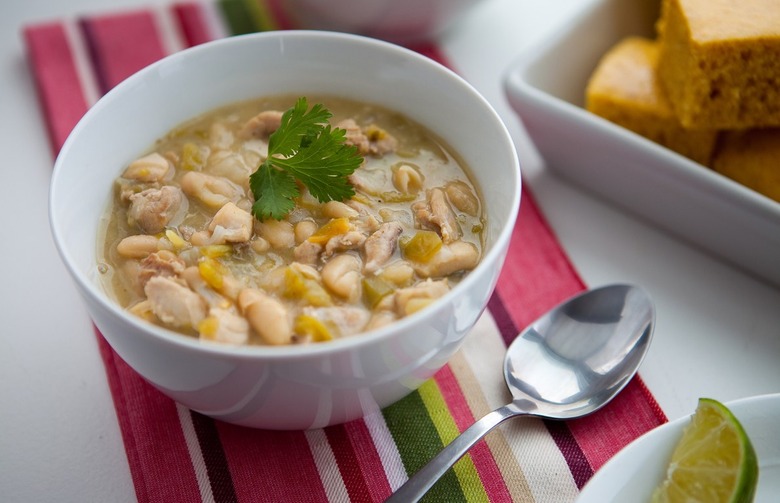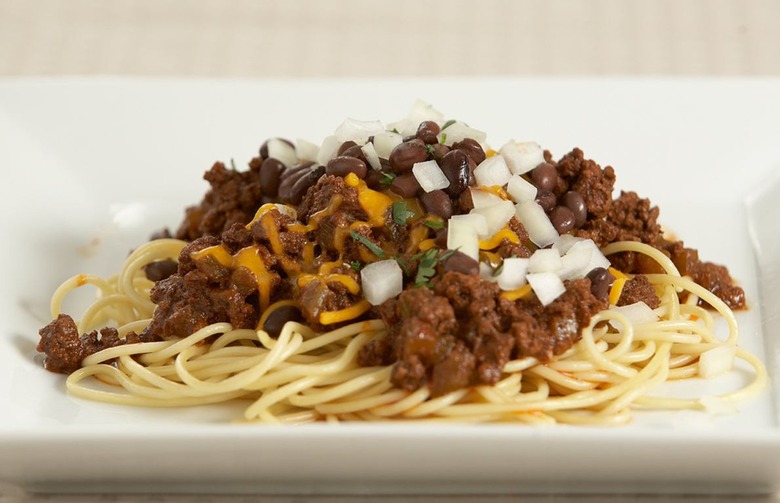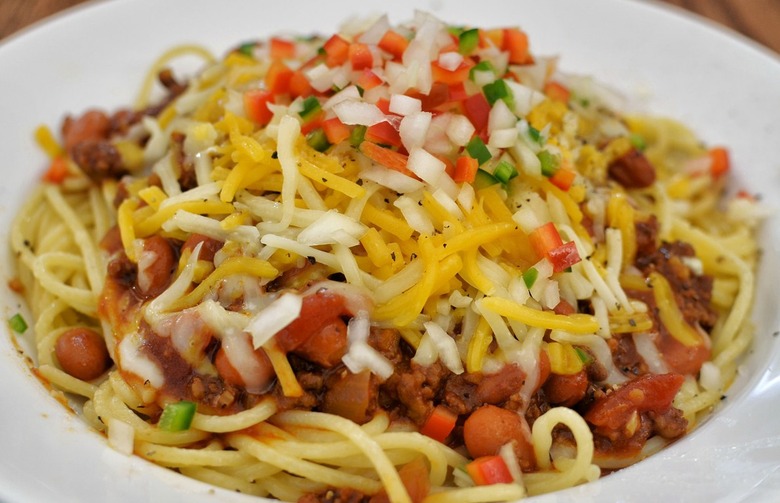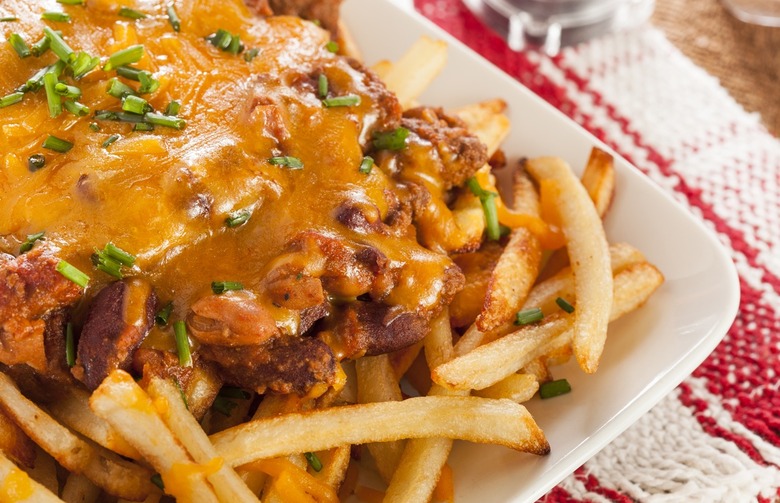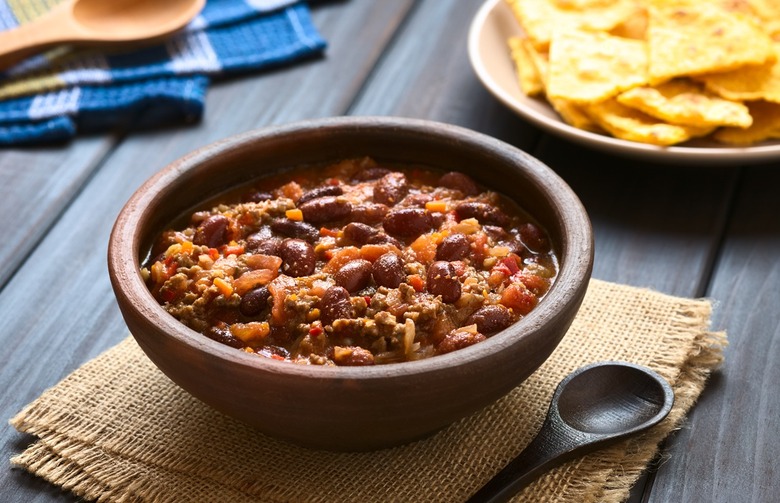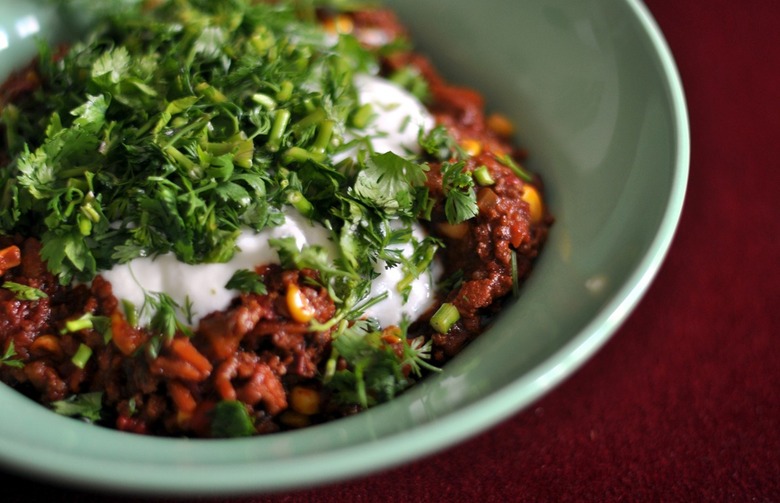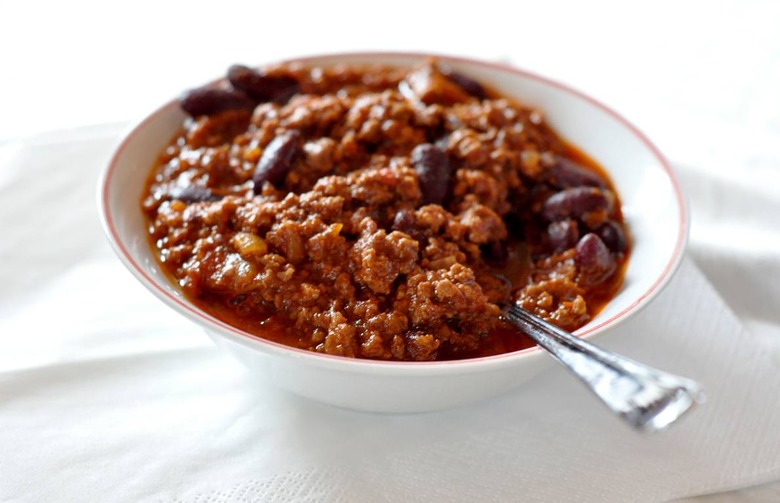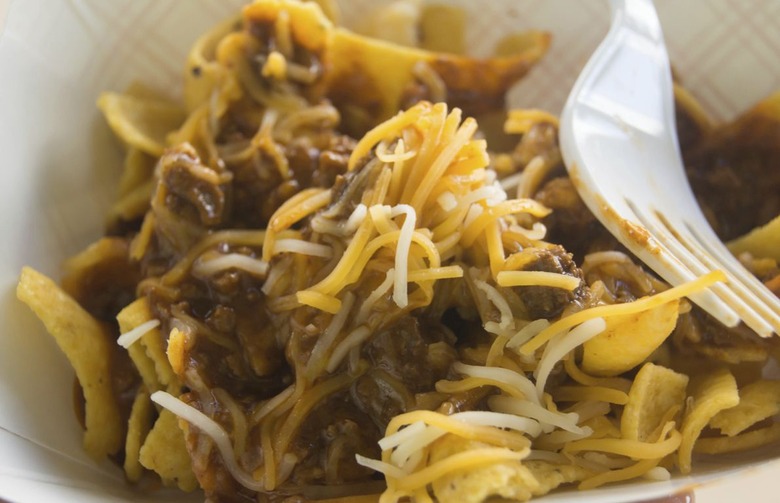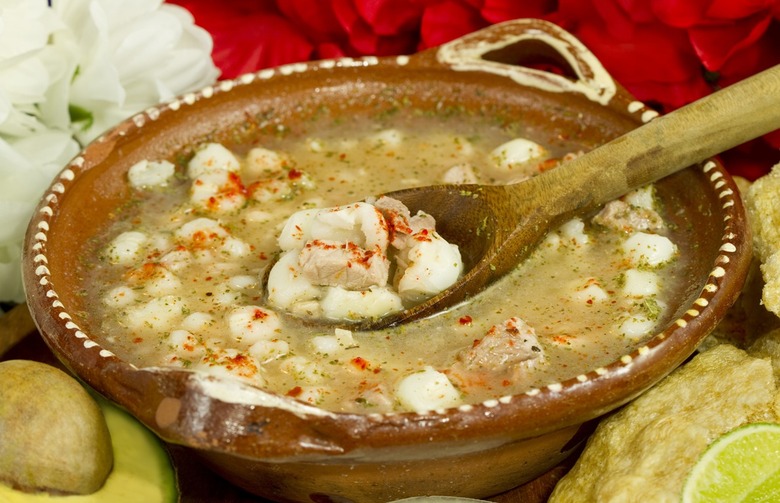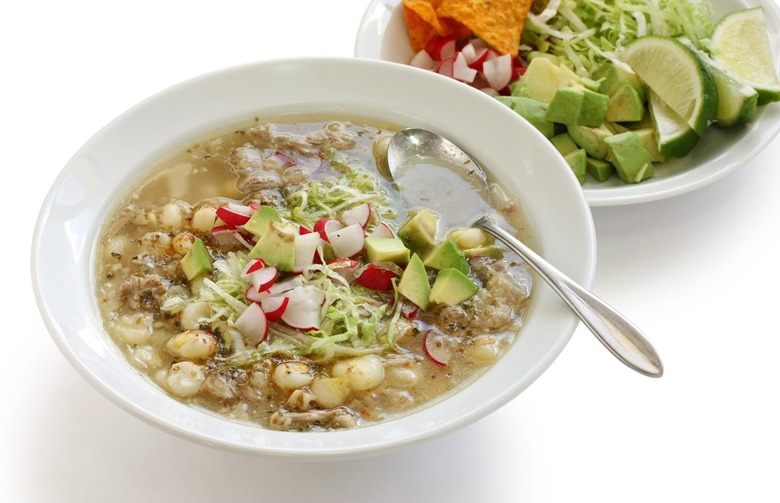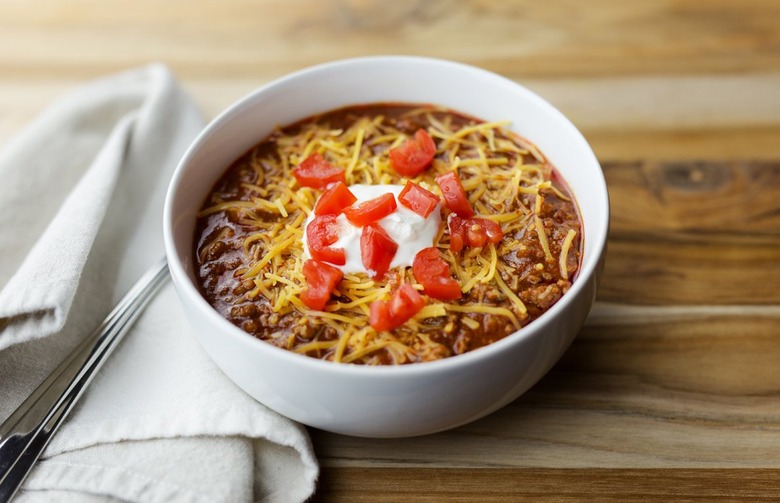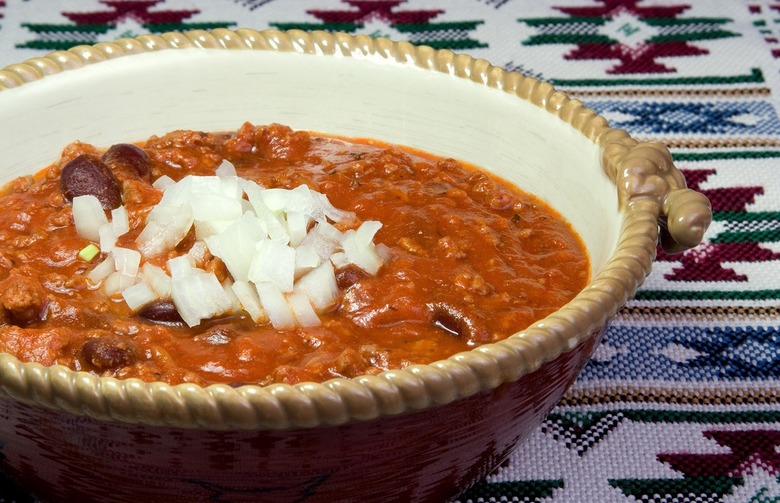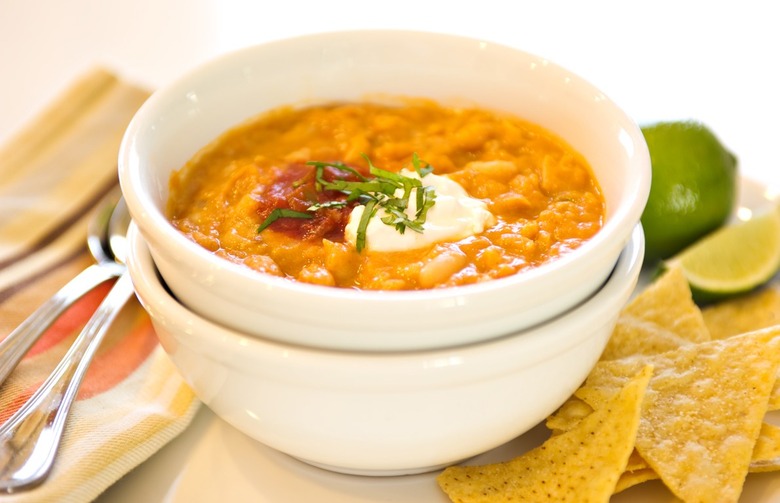Chili Wars: 10 Chili Recipes From Every Region
Chili isn't Mexican, as you might have assumed. There's no dish that exactly corresponds to it in real Mexican cuisine. Chili con carne as we know it today made its debut in San Antonio in the early twentieth century. Since then, it has spread around the country (and the world) taking on regional accents.
Cincinnati has its own version, made famous by the Skyline restaurant; St. Louis serves up a dish called slinger —eggs, hashbrowns, and a hamburger patty covered in chili; and then there are variations like green chili, red chili, and white chili.
Even how you serve your chili is defined by region. We find Frito pies across the South, chili mac in the Midwest, and coney dogs in Michigan.
If you are looking for a breakdown of regional chili styles, we have the history and the recipes you need to make your own educated decisions about which side of the chili wars you'd rather be on.
Cincinnati Chili
One name come to mind when you talk about Cincinnati-style chili — Skyline, the restaurant that made this unique style of chili famous across the country. Cincinnati-style chili consists of ground beef, a Mediterranean spice blend, water/stock, and tomato paste. cooked together for hours to develop the flavors. Cincinnatians have even developed a unique ordering system for their chili called the "way-system". It is uncommon to see someone order a bowl of Cincinnati chili solo; they start with two-way, which is spaghetti topped with chili, then three-way (spaghetti, chili, and cheese), four-way (spaghetti, chili, onions, and cheese), four-way bean (spaghetti, beans, chili, and cheese), and five-way (spaghetti, beans, chili, onions, and cheese).
Recipe: Cincinnati Chili Mac
I liken this regional style of chili to an American version of bolognese. A deeply flavorful meat-tomato sauce with a complex spice profile, served over spaghetti and topped with shredded Cheddar and chopped onions. If you're thinking, chili...on spaghetti? Really? Believe it. Even this devout Texas chili fan has been made a convert. — Maryse Chevriere
Recipe: Cincinnati Chili Fries
If you've been to Cincinnati and have tried their chili, then you know it can only be Skyline Chili. A silky, thin sauce flavored with hints of cinnamon coats finely ground meat for a truly delicious and unique bowl of chili. Topped with shredded Cheddar cheese and diced onions, and you can call it a day. Oh wait, not until you place that chili, cheese, and onions on a bed of fries, though. — Anne Dolce
Chili con Carne
This Tex-Mex classic is spicy — sometimes forgoing other vegetables and beans to accentuate the heat from the chiles. The general guidelines for making this classic-style of chili include chiles, meat (always beef), and not much else — though today it is increasingly common to find tomatoes and beans in this style of chili.
Recipe: Chili Con Carne
This chili con carne recipe takes a page from the two-alarm chili created by a North Texan newspaper man, Wick Fowler, who insisted upon adding tomatoes to his famous chili. This chili uses concentrated tomato paste to give the tomato flavor that extra hint of sweetness.
Recipe: Chili Con Carne
As Texas' official dish, chili con carne is taken pretty seriously in the Lone Star State. This recipe stays true to the original San Antonio recipe.
Frito Pies
Recipe: Dean Fearing’s Frito Pie
Fearing's recipe uses fried tortilla strips in place of the Fritos, a classic Texas-style chili, complete with Shiner beer, and lots of cheese.
Recipe: Chili Frito Pie
Chili gets a lot of its mojo from the toppings that go with it, like sour cream, Cheddar cheese, and salsa. This recipe takes it to a whole new level with adding a layer of Fritos to the mix on not the top of the bowl, but the bottom. — HUNGRY
Chili Verde
Chili verde, green chili, uses green tomatillos and green chiles, which give it its signature color and slightly tart flavor. Chili verde is made with pork instead of beef and has a thinner consistency than most chile con carnes. This style is a favorite in Colorado and New Mexico, however, New Mexicans insist upon using Hatch chiles in there stews over Anaheims.
Recipe: Chili Verde
Someone in the office (I'm not naming names) teased me about my boundless recipes for tomatillos. And I admit to it: I love 'em. They're cheap and tart and easy to cook with or eat raw (try them in a salad with red peppers and Oaxacan cheese). So here's yet another great way to use them. — Valaer Murray
Recipe: Sausage Chili Verde with Hominy and Pumpkin
This contemporary dish celebrates the regional cooking staples of Mexico and fall's most seasonal produce. — Aarón Sanchez
For the Sausage Chili Verde with Hominy and Pumpkin recipe, click here.
Texas Red Chili
Texas Red chili is similar to the classic chili con carne except for one very important difference — absolutely no beans.
Recipe: Chili Austin-Style
As a Clevelander, I've always enjoyed beans in my chili until a time while at culinary school I learned a lesson about chili — that it is great without beans. A big man by the name of Stewart Scruggs from Austin, Texas, brought a batch of his chili to watch some Sunday football. And you know what? There wasn't a bean in sight! Thanks a lot, Stewart! I couldn't stop eating this chili then and I can't stop making it now, so I have been known to bring it with me when invited to a pot luck dinner. — Michael Symon
White Chili
Well, it doesn't appear that anyone in particular is laying claim to white chili, so its origins aren't exactly clear. This chili also breaks a host of Texas-chili rules, like beans (white beans), no tomatoes, and chicken instead of pork shoulder or beef. Still this creamy chicken stew with a green chile sauce still tastes like a chili soup, so we included a recipe in our roundup.
Recipe: White Chicken Chili
Serve this white chili hot with cilantro, shredded white Cheddar, avocado, and pico de gallo. I also like to eat this with tortilla chips. — Heather Christo
